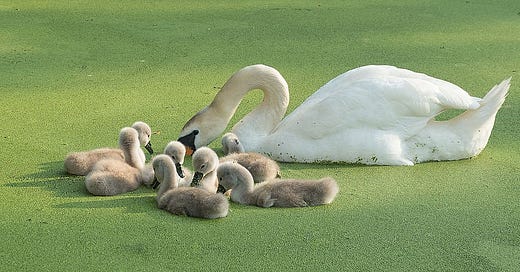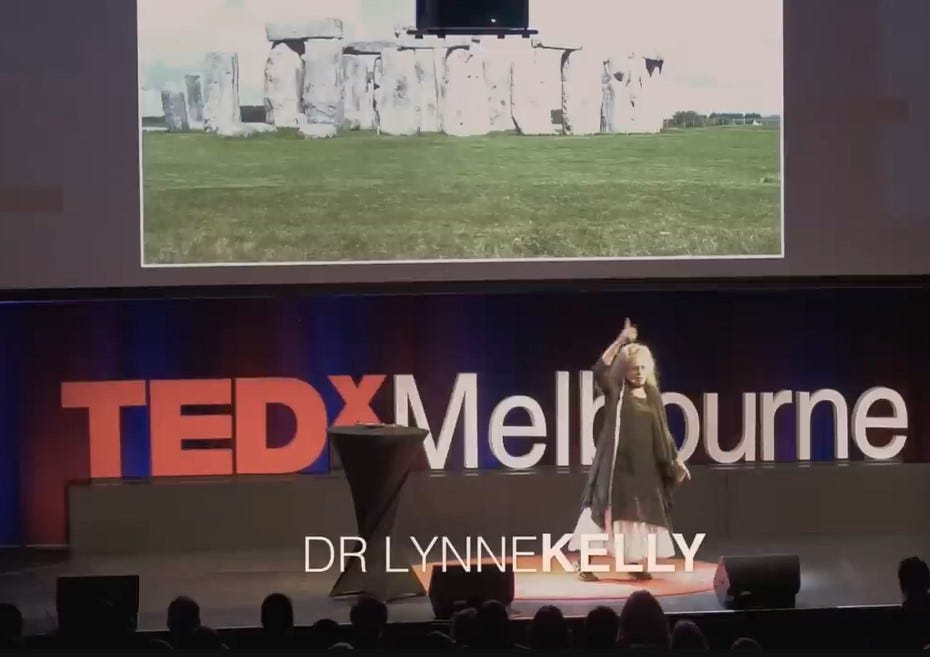Tutorial Summary for Effective Learning #1: Strategies
Classical critical thinking and scholastic notes
On days like this, when I've been as busy as can be at work, on work, and off work (= chores), I'll post a Tutorial Summary. It could be helpful to other psychology students to 'get the gist' of a session with me.
Whether your taking whatever subject I'm highlight or not, there may be something in here that's perfect for you (study tip wise).
For the record, this session was for the health psychology coursework, of a distance ed 4th year student.
Pic: Mute swan cygnets learning in a duckweed-covered pond in Prospect Park, Brooklyn, New York City; Rhododendrites (2019)
We discussed strategies for effective studying, including the use of digital and handwritten notes, mind mapping, and flashcards. Also, we chatted about challenges with using OneNote.
And we discussed the benefits of engaging fully with course materials, particularly the discussion board (for cultivating soft skills in communication with colleagues).
Throughout, we focused on the value of curiosity, reflection, and classical critical thinking for academic learning and professional practice.
I suggested some homework for the student. Seriously ~:-)
o Implement pre- and post-reflection strategies when engaging course materials.
o Skim readings to get an overview, before diving into detailed content.
o Follow a sequence of:
- pre-reflection
- skim required reading (overview, headings, interesting visuals, vocab)
- read module summary
- read module material
- return to required reading for more granular focus (based on summary and module)
- post-reflection Create mind maps and visual aids as following the sequence, to help process information and aid recall.
o Actively participate in discussion boards, including initiating a discussion with classmates about material (rather than assessments only), to enhance learning and networking.
o Experiment with audio recording of reading course materials to self, using mobi (and or downloading an mp3 for driving/bus rides).
o Continue creating flashcards, consider more visuals and shorter recall prompts, and incorporating different media (e.g., mobile pics) and forms (e.g., Quizlet).
o Practice classical critical thinking by considering multiple viewpoints on topics (the aim is not necessarily agreement with them, rather to 'hold' them mentally for a time).
And... I sometimes (sometimes), given myself homework. In this case:
o Review a previous annotated assignment of the student, to become familiar with their academic writing voice, and to gain insight into the expectations of their School.
Afters, if I have time (for student's purchase 'bulk hour packages,' as this Helps me to create time), I share resources based on the session. For this psychology student:
Handwriting vs. Keyboard
Van der Weel, F. R., & Van der Meer, A. L. (2024). Handwriting but not typewriting leads to widespread brain connectivity: A high-density EEG study with implications for the classroom. Frontiers in Psychology, 14, 1219945. doi.org/10.3389/fpsyg.2023.1219945
External Memory Devices
In some African cultures, storyboard memory aids as part of oral storytelling, are made with seeds or other small natural objects. This aids retention and recall, given the narrative (storytelling) structure of information.
The storyboards are mnemonic devices for the storyteller, helping them to recall the sequence of events, key characters, and important features of the story.
The seeds/other objects act as visual and or muscle memory representations for different parts of the story. Similar to Ancient Greek orators use of a memory palace (e.g., /@AnthonyMetivierMMM on the ytube). Or a bunch of other cultures past and present (see Modern memory, ancient methods | Lynne Kelly | TEDxMelbourne
Hope this is useful to your psychology studies.
Light & Life~ Charmayne







